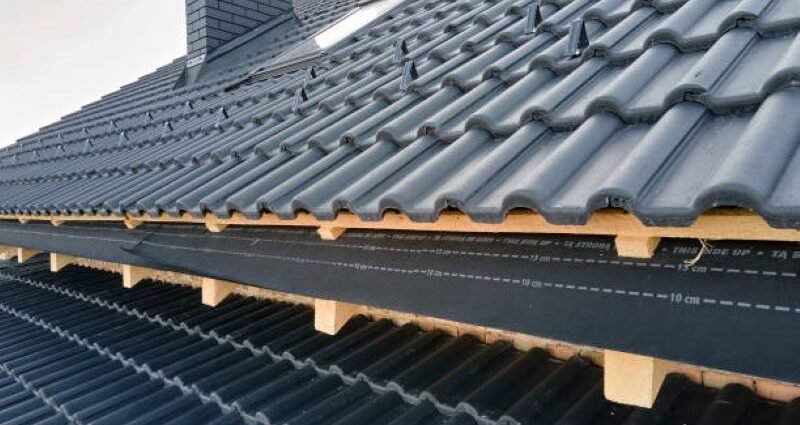Roof installation may seem like just another construction job, but it’s a sophisticated dance between precision, craftsmanship, and engineering. Whether you’re upgrading your current home or building from scratch, the installation process is far more intricate than people often realize. Beyond protecting your home from the elements, a roof is a critical design feature that can influence insulation, resale value, and aesthetic appeal. Still, have you considered what truly goes on behind the scenes of a roof installation?
This article pulls back the curtain on the art and science of roof installation. You’ll discover the meticulous planning, skills, and decisions required for a successful installation, as well as the environmental and economic considerations shaping the future of roofing.
Why Roof Installation is More Than Meets the Eye
Many people think of roof installation as simply nailing shingles in place—but it’s so much more. A roof is a system, and every component plays a role in ensuring its functionality and longevity. From selecting the right materials to aligning proper ventilation and drainage, roof installation brings together multiple disciplines, including physics, architecture, and even environmental science.
Did you know that an improperly installed roof can lead to significant problems like water damage, heat loss, and even structural instability? This is why a roof should never be considered a “one-size-fits-all” feature of a home. Every house, building, and environment deserves its unique roofing plan.
Breaking Down the Layers of a Well-Installed Roof
Your roof isn’t just made up of shingles or tiles; it’s an intricate system of layers that work together to shield your home. Here’s a quick overview of what goes into the construction of a durable and resilient roof:
1. Roof Decking
The decking forms the foundation of your roof. Typically made of plywood or oriented strand board (OSB), it serves as the surface onto which all other materials will be layered. It must be sturdy enough to handle the weight of shingles or metal panels while providing a secure platform for the roofers to work on.
- Pro Tip: Ensure that your decking meets local building codes as well as the weight requirements of your chosen roofing material.
2. Underlayment
This is a moisture-resistant or waterproof barrier installed over the decking. Its job is to prevent water infiltration while providing a smooth base for your roof covering.
- Materials include asphalt-saturated felt or synthetic underlayment.
- Newer products in the market feature breathable materials to prevent humidity buildup.
3. Flashing
Flashing is used to seal joints where the roof meets other materials, such as chimneys, vents, and walls. Without proper flashing, these vulnerable points can easily become entry points for water.
4. Vapor Barriers and Insulation
This invisible duo works to keep your home energy-efficient. Vapor barriers prevent moisture from entering your roof system and insulation helps maintain consistent internal temperatures.
- The most popular insulation materials include foam boards, fiberglass, and cellulose.
Smart Material Selection for Longevity
Choosing the right roofing material is about more than aesthetics. Beyond whether you opt for asphalt shingles, metal roofing, clay tiles, or a green roof, factors like climate, terrain, and home design heavily influence the material’s effectiveness and lifespan.
Asphalt Shingles:
- Most popular option due to affordability and durability.
- Lifespan typically ranges between 20–30 years.
Metal Roofing:
- Lightweight and often made from recyclable materials.
- Can last over 50 years with minimal maintenance.
Clay and Concrete Tiles:
- Ideal for warmer climates and typically last 50+ years.
- While beautiful, these are significantly heavier and require reinforced decking.
Green Roofs:
- Feature vegetation planted on a waterproof covering.
- Provides excellent insulation and environmental benefits, but requires meticulous maintenance.
Your roofing contractor can help assess which material aligns with your budget and long-term needs.
Balancing Functionality with Design
While protecting your home is paramount, modern roof installation also involves creating a visually appealing exterior. Colors, textures, and patterns can transform your roof into your home’s most striking feature. Architectural trends in roofing have also evolved, with innovations like combining skylights, solar panels, and living roofs for a more functional yet stylish appearance.
Solar Integration
Homes with solar roofs can improve their energy efficiency by up to 60%. Installing solar panels during the roof installation process is far more seamless than retrofitting them onto an older roof.
Color Psychology
Believe it or not, roof colors can influence how your home feels. Light colors like beige and gray reflect heat, making them ideal for hot climates, while dark hues help retain warmth in cold regions.
How Roofing is Evolving with Technology
Technology is shaping the future of roof installation in profound ways. From cutting-edge materials to AI-powered installations, here’s how innovation is taking roofing to the next level:
1. Drones in Roofing Surveys
Contractors now use drones to conduct roof inspections for better precision and safety. This technology allows them to assess damages, identify weak spots, and create more accurate project scopes before the installation begins.
2. Smart Roofs
Smart roofing systems use embedded sensors to detect leaks or damage early, alerting homeowners instantly. This prevents costly repairs and extends the roof’s overall lifespan.
3. Sustainable Materials
Eco-friendly roofing materials, such as recycled shingles, bamboo, and green roof systems, are gaining traction as environmental awareness grows. These options reduce carbon footprints and help tackle climate change.
Local Codes and Environmental Implications
Many local governments have specific codes around roof installation. For instance, in hurricane-prone areas, roofs must meet stringent wind-resistance standards. Similarly, homes in fire-prone regions might be required to use flame-retardant materials.
On a broader scale, the roofing industry is increasingly focused on sustainability. Not only do green roofs and reflective materials reduce energy consumption, but global manufacturers are also exploring ways to recycle old materials into new roofing products.
Choosing the Right Roofing Contractor
The quality of your roof installation heavily depends on who’s installing it. Always vet your contractor by checking reviews, verifying licenses, and discussing their experience with the materials and designs you’re interested in.
Questions to Ask a Contractor:
- Are you fully licensed and insured?
- Can you provide references?
- How do you handle unexpected complications during the installation?
A good contractor will walk you through the entire process, provide a detailed estimate, and work to ensure minimal disruption to your home life.
Roofing as an Investment
Many homeowners delay roof installations due to costs, but the truth is that your roof is one of the most critical investments you’ll make. A well-installed roof not only protects your home but also boosts curb appeal and resale value.
For instance, homes with newly installed roofs often see an ROI of 68% or more, particularly if eco-friendly materials are used. That’s nothing to overlook when considering the bigger picture of homeownership.
Take the Next Step Toward a Better Roof
Roof Installation is more than just placing shingles—it’s a blend of precision, innovation, and design that directly impacts your home’s value, energy efficiency, and long-term durability. As materials evolve and eco-friendly solutions gain traction, a quality installation ensures your roof performs and impresses for decades.
If you’re preparing for a roof upgrade, now is the time to work with professionals who prioritize craftsmanship and modern techniques. Your roof isn’t just protection—it’s a defining feature of your home’s comfort and performance.








